BELLE BOYD
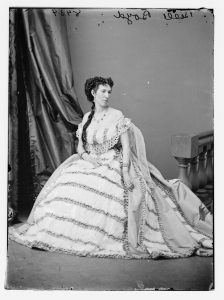
Maria Isabella Boyd (May 9, 1844– June 11, 1900), best known as Belle Boyd (and dubbed the Cleopatra of the Secession or Siren of the Shenandoah, and later the Confederate Mata Hari) was a Confederate spy in the American Civil War. She operated from her father’s hotel in Front Royal, Virginia, and provided valuable information to Confederate General Stonewall Jackson in 1862.
Maria Isabella “Belle” Boyd was born on May 9, 1844, in Martinsburg, Virginia (now part of West Virginia). She was the eldest child of Benjamin Reed and Mary Rebecca (Glenn) Boyd. She described her childhood as idyllic. After some preliminary schooling in Martinsburg, she attended finishing school at the Mount Washington Female College in Baltimore, Maryland in 1856 at age 12.
Boyd’s espionage career began by chance. According to her 1866 account, a band of Union army soldiers heard that she had Confederate flags in her room on July 4, 1861, and they came to investigate. They hung a Union flag outside her home. Then one of the men cursed at her mother, which enraged Boyd. She pulled out a pistol and shot the man, who died some hours later. A board of inquiry exonerated her of murder, but sentries were posted around the house and officers kept close track of her activities. She profited from this enforced familiarity, charming at least one of the officers whom she named in her memoir as Captain Daniel Keily, She wrote in her memoir that she was indebted to Keily “for some very remarkable effusions, some withered flowers, and a great deal of important information.” She conveyed those secrets to Confederate officers via her slave Eliza Hopewell, who carried them in a hollowed-out watch case. Boyd was caught on her first attempt at spying and told[that she could be sentenced to death.
General James Shields and his staff gathered in the parlor of the local hotel in mid-May 1862. Boyd hid in the closet in the room, eavesdropping through a knothole that she enlarged in the door. She learned that Shields had been ordered east from Front Royal, Virginia. That night, she rode through Union lines, using false papers to bluff her way past the sentries, and reported the news to Colonel Turner Ashby, who was scouting for the Confederates. She then returned to town. When the Confederates advanced on Front Royal on May 23, Boyd ran to greet Stonewall Jackson’s men, avoiding enemy fire that put bullet holes in her skirt, as according to her memoir. She urged an officer to inform Jackson that “the Yankee force is very small […] Tell him to charge right down and he will catch them all.”
Jackson did and wrote a note of gratitude to her: “I thank you, for myself and for the army, for the immense service that you have rendered your country today.” For her contributions, she was awarded the Southern Cross of Honor. Jackson also gave her captain and honorary aide-de-camp positions.
Boyd was arrested at least six times but somehow evaded incarceration. By late July 1862, detective Allan Pinkerton had assigned three men to work on her case. She was finally captured by Union officials on July 29, 1862, after her lover gave her up, and they brought her to the Old Capitol Prison in Washington, D.C. the next day. An inquiry was held on August 7, 1862, concerning violations of orders that Boyd be kept in close custody. She was held for a month before being released on August 29, 1862, when she was exchanged at Fort Monroe. She was arrested again in June 1863, but was released after contracting typhoid fever.
In March 1864, Boyd attempted to travel to England, but she was intercepted by a Union blockade and sent to Canada where she met Union naval officer Samuel Wylde Hardinge. The two married in England. and had a daughter, Grace. Boyd became an actress in England after her husband’s death to support her daughter. Following the death of her husband in 1866, she and her daughter returned to the United States.
Boyd assumed the stage name Nina Benjamin to perform in several cities, eventually ending up in New Orleans where she married John Swainston Hammond in March 1869, a former British Army officer who fought for the Union Army during the Civil War. They had two sons and two daughters; their first son died as an infant. Boyd divorced Hammond in 1884 and married Nathaniel Rue High in 1885. She subsequently began touring the country giving dramatic lectures of her life as a Civil War spy.
ELIZABETH VAN LEW
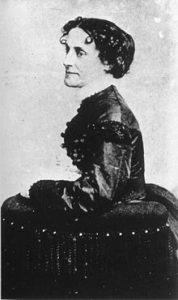
Elizabeth Van Lew (October 12, 1818 – September 25, 1900) was an American abolitionist and philanthropist who built and operated an extensive spy ring for the Union Army during the American Civil War.
Elizabeth Van Lew was born on October 12, 1818, in Richmond, Virginia. Her father was John Van Lew and Eliza Baker was her mother. Her maternal grandfather was Hilary Baker, mayor of Philadelphia from 1796 to 1798. John Van Lew came to Richmond in 1806, at the age of 16; within 20 years, he had built up a prosperous hardware business and owned several slaves.
Van Lew was educated in Philadelphia. The Quaker school she attended is thought to have been influential in forming her anti-slavery views. Following her father’s death in 1843, Van Lew and her mother continued to live in the family’s home in Richmond. John Van Lew’s will stipulated that none of the family’s enslaved human property could be freed. However, Elizabeth and her mother helped the slaves in their household to earn wages and a measure of freedom. While the Van Lew family benefited from slavery, she believed it would eventually fade away. Her hope was that Southerners would free their slaves and that emancipation by manumission would gradually end the practice that she viewed as abhorrent and destructive to the South.
Upon the outbreak of the war, Van Lew began working on behalf of the Union with her mother, caring for wounded soldiers. When Libby Prison was opened in Richmond, Van Lew was allowed to bring food, clothing, writing paper, and other things to the Union soldiers imprisoned there. She aided prisoners in escape attempts, passing them information about safe houses and getting a Union sympathizer appointed to the prison staff.[6] Van Lew reportedly helped Union soldiers by giving them money to bribe Confederates.
Recently captured prisoners gave Van Lew information on Confederate troop levels and movements, which she passed on to Union commanders. She is rumored to have helped hide escaped Union prisoners and Confederate deserters in her own mansion, although no definite proof of such claims has been found.
Van Lew also operated a spy ring during the war, which included clerks in the War and Navy Departments of the Confederacy, as well as free and enslaved African Americans, including Mary Richards Bowser. Mary Jane Richards, aka Mary Elizabeth Bowser, was reputedly a formerly enslaved maid in the Van Lew household, and was sent by the family to be educated in a Quaker school in Pennsylvania. She might have used the alias Mary Elizabeth Bowser to conceal her identity. Stories surfaced about the woman having possibly served as a maid for Jefferson Davis, while spying for the Union. She herself admitted to having served as a detective during the war. The spy ring eventually became official agents of the Union when General Benjamin Butler, having heard about Van Lew from two escaped Union Prisoners of War, recruited her to work for the US government.
Van Lew’s spy network was so efficient that on several occasions she sent Lt. Gen. Ulysses S. Grant fresh flowers from her garden and a copy of the Richmond newspaper. She developed a cipher system and often smuggled messages out of Richmond in hollow eggs. Union commanders highly valued Van Lew’s work; intelligence commander George H. Sharpe, Army of the Potomac, recommended that the government reimburse Van Lew $15,000 because of the great expense she incurred in her efforts, including employment of spies. Because of the merit of her work, General Grant appointed Van Lew Postmaster General of Richmond for the next eight years.
In 1864, Van Lew risked her entire spy network to see that the corpse of Union Col. Ulric Dahlgren, who died trying to free Union prisoners in Richmond, was properly buried. Reports of disrespectful display of his corpse had outraged Northern public opinion, and Van Lew herself. After the siege of Petersburg, Van Lew assisted civilians of both sides.
When Richmond fell to U.S. forces in April 1865, Van Lew was the first person to raise the United States flag in the city.
On Grant’s first visit to Richmond after the war, he had tea with Van Lew, and later appointed her postmaster of Richmond. Van Lew modernized the city’s postal system and employed several African Americans, with the same pay and benefits as white employees, until new President Rutherford B. Hayes had her replaced in 1877. She was allowed to return as a postal clerk in Richmond, where she served from 1883 to 1887.
After Reconstruction, Van Lew became increasingly ostracized in Richmond. “No one will walk with us on the street,” she wrote, “no one will go with us anywhere; and it grows worse and worse as the years roll on.” Having spent her family’s fortune on intelligence activities during the war, she tried in vain to be reimbursed by the federal government. When attempts to secure a government pension also failed, she received support from the family and friends of Union Col. Paul Joseph Revere, whom she had helped while he was held prisoner during the Civil War. These Bostonians gladly collected money for the woman who helped so many Union soldiers during the war. However, neighborhood children, including future novelist Ellen Glasgow, were told to consider her a witch. Even into the twentieth century, many white Southerners regarded Van Lew as a traitor. However, among Richmonders of color and white Unionists, Van Lew was an honored figure.
Van Lew died on September 25, 1900 (aged 81), and was buried in Richmond’s Shockoe Hill Cemetery in the same grave as her niece Eliza Van Lew, who had been her constant companion in her later years, and who had died just a few months before her. Elizabeth was purportedly buried vertically, facing the north; however, this is highly unlikely, as Cemetery records do not reflect that circumstance, and such a burial would have been unnecessary as multiple persons were often buried in a common grave shaft in that era. Relatives of Union Colonel Paul J. Revere, whom she had aided during the war, donated the tombstone. The epitaph reads: “ELIZABETH L. VAN LEW (1818 – 1900) She risked everything that is dear to man– friends– fortune– comfort– health– life itself– that slavery might be abolished and the Union preserved. This boulder from the Capitol Hill in Boston is a tribute from Massachusetts friends.”
In her will, Van Lew bequeathed her personal manuscripts, including her account of the war, to John P. Reynolds, Col. Revere’s nephew. In 1911, Reynolds convinced the scholar William G. Beymer to publish the first biography of Van Lew in Harper’s Monthly. The biography indicated that Van Lew had been so successful in her spying activities because she had feigned lunacy, and this idea won Van Lew the nickname “Crazy Bet” However, it is highly unlikely that Van Lew actually did pretend to be crazy. Instead, she likely relied on the Victorian custom of female charity to cover her espionage.
The city of Richmond acquired and demolished the Van Lew mansion, her former home, in 1911. Bellevue Elementary School (which still remains) was erected on the site the following year. Historical plaques and a marker now memorialize her activities, and those of Bowser (aka Mary Jane Richards).] Furthermore, the daughter of two of Van Lew’s servants, Maggie Walker, became a prominent Christian entrepreneur in Richmond, founding the country’s first African-American-woman owned bank.
SARAH EMMA EDMONDS
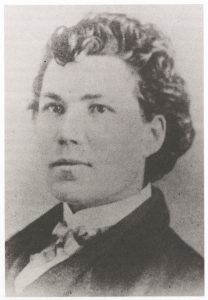
Sarah Emma Edmonds (born Sarah Emma Evelyn Edmondson married name Seelye, alias Franklin Flint Thompson; December 1841 – September 5, 1898) was a British North America-born woman who claimed to have served as a man with the Union Army as a nurse and spy during the American Civil War. Although recognized for her service by the United States government, some historians dispute the validity of her claims as some of the details are demonstrably false, contradictory, or uncorroborated.
Edmonds was born in December 1841 in New Brunswick, Canada, then a British colony. The youngest child, she grew up with her sisters and brother, Thomas, on their family’s farm near Magaguadavic Lake, not far from the border with the U.S. state of Maine. She was abused by her father, who had wanted a boy to help with the crops on the farm. Thomas had “fits,” which was most likely to have been epilepsy. At age 15, Edmondson fled home to escape an arranged marriage; she was aided by her mother, who also had married young. She changed her last name to Edmonds in order to hide from her father, and started a millinery shop with a friend in Moncton, New Brunswick. Her father eventually found her, either by himself or through acquaintances, and Edmonds fled again to escape him.
She adopted the guise of Franklin Thompson to travel more easily. In addition, there are claims that her father had made her dress as a boy growing up, which would make her familiar and comfortable in a male role.
Thompson crossed into the United States and worked for Hurlburt and Company, a successful Bible bookseller and publisher in Hartford, Connecticut, selling Bibles door to door. Her boss, Mr. Hurlburt, claimed that she was the best salesman he had in 30 years of the business.
Edmonds’ interest in adventure was sparked in childhood by Maturin Murray Ballou’s book Fanny Campbell, the Female Pirate Captain, telling the story of Fanny Campbell and her adventures on a pirate ship during the American Revolution while dressed as a man. Campbell continued dressing as a man after the war in order to pursue other adventures. Edmonds used Campbell as an inspiration to “escape the limitations of her sex.” She enlisted in Company F of the 2nd Michigan Infantry on May 25, 1861, also known as the Flint Union Greys. She disguised herself as a man named Franklin Flint Thompson, the middle name possibly after the city of Flint, Michigan, where she volunteered. She felt that it was her duty to serve the United States, as it was her new country. She at first served as a field nurse, participating in several campaigns under General McClellan, including the First and Second Battle of Bull Run, Antietam, the Peninsula Campaign, Vicksburg, Fredericksburg, and others.
According to her memoir, Thompson’s career took a turn when an American spy in Richmond, Virginia, was discovered and put before a firing squad, and her friend James Vesey was killed in an ambush. Thompson took advantage of the open position, as well as the opportunity to avenge Vesey’s death, and became a spy. There is no proof in her military records that she actually served as a spy, but she wrote extensively about her experiences in her memoir.
She travelled into enemy territory to gather information, requiring her to come up with many disguises. One disguise required her to use silver nitrate to dye her skin black, wear a black wig, and walk into the Confederacy disguised as a Black man by the name of Cuff. Another time, she entered the Confederacy as an Irish peddler by the name of Bridget O’Shea, claiming that she was selling apples and soap to the soldiers. Once, she was posing as a black laundress working for the Confederates when a packet of official papers fell out of an officer’s jacket. She returned to the United States with the papers, and the generals were delighted. Additionally, she worked as a detective, Charles Mayberry, in Kentucky, uncovering a Confederate agent.
Thompson suffered an injury before the Second Battle of Bull Run in 1862, when she took a trip to Berry’s Brigade in order to deliver mail. In an attempt to take a shortcut, she was thrown into a ditch by her mule before reaching the brigade; she sustained severe injuries. In 1863, she contracted malaria. Doctors urged her to go to the hospital for treatment. Thompson abandoned her post in the army, fearing that she would be discovered as a woman if she went to a military hospital. She checked herself into a private hospital, intending to return to military life once she had recuperated.
Once she recovered, however, she saw posters listing Frank Thompson as a deserter. Rather than return to the army under another alias or as Frank Thompson, and risk execution for desertion, she decided to serve as a female nurse under her real name at a Washington, D.C. hospital for wounded soldiers run by the United States Christian Commission. There was speculation that Thompson may have deserted because of John Reid being discharged months earlier, and there is evidence in Reid’s diary that she had mentioned leaving before she had contracted malaria. Thompson’s fellow soldiers spoke highly of her military service, and even after her disguise was discovered, they considered her a good soldier. She was referred to as a fearless soldier and was active in every battle that her regiment faced.
ANTONIA FORD WILLARD
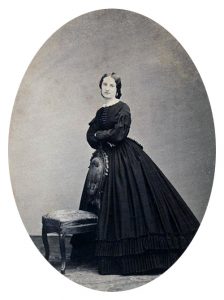
Antonia Ford Willard (July 23, 1838 – February 14, 1871) was a volunteer civilian spy for the Confederate States Army during the American Civil War.
Antonia Ford was born at Fairfax Court House, Virginia. She was a daughter of a prominent local merchant and ardent secessionist named Edward R. Ford. Before going to the Buckingham Female Collegiate Institute in Buckingham, Virginia, she attended nearby Coombe Cottage, a private finishing school for girls.
As Union forces occupied the Fairfax region in mid-1861, Ford circulated among the officers and garnered valuable intelligence about troop strengths and planned movements, which she passed along to Brigadier General J.E.B. Stuart, in whose artillery her brother, Charles, served. Ford also spied for John S. Mosby, a noted partisan ranger. Stuart, grateful for her service and appreciative of the information he had received, designated Ford as an honorary aide-de-camp on October 7, 1861.
In early 1863, Ford was betrayed by a Union counterspy named Frankie Abel, whom she had befriended and shown the document bearing Stuart’s signature. Ford was subsequently arrested on March 13 and incarcerated in Washington, D.C., at the Old Capitol Prison. She was accused of playing a prominent role in the capture of Union general Edwin H. Stoughton, but Colonel Mosby and others later denied her complicity, and no evidence of her guilt could be found. She was released and exchanged seven days later. However, she was arrested in Fairfax by Major Joseph Clapp Willard (1820–1897) and sent back to Old Capitol Prison. She took the Oath of Allegiance, he resigned his position in the Union Army, and they subsequently married on March 10, 1864, in Washington, D.C. The couple had three children, only one surviving infancy.
Antonia Ford Willard died in Washington, D.C. in 1871 as an indirect result of health issues stemming from her captivity. Her husband never remarried. Their son Joseph Edward Willard later became Lieutenant Governor of Virginia and the father-in-law of Kermit Roosevelt .
Ford was buried at Oak Hill Cemetery in Washington, D.C.
PAULINE CUSHMAN
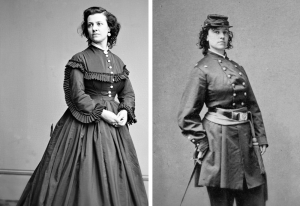
Pauline Cushman (born Harriet Wood; June 10, 1833 – December 2, 1893) was an American actress and a spy for the Union Army during the American Civil War. She is considered one of the most successful Civil War spies.
Harriet Wood, who later adopted the stage name of Pauline Cushman, was born in New Orleans, Louisiana, on June 10, 1833, the daughter of a Spanish merchant and a Frenchwoman (daughter of one of Napoleon Bonaparte’s soldiers). Harriet and her brother William were raised in Grand Rapids, Michigan. Her parents moved there to establish a trading post with indigenous peoples. In 1862, she made her stage debut in Louisville, Kentucky, a Union-occupied city. Later, she would travel to New York where she would take the stage name Pauline Cushman. Over the course of her life, Cushman was married to Jere Fryer, Charles C. Dickinson, and August Fichtner. She had three children: Charles, Ida, and an adopted daughter, Emma.
After a Northern performance, Cushman was paid by two local pro-Confederate men to toast Confederate President Jefferson Davis after the performance. The theatre company forced her to quit, but she had other ideas. She had decided to ingratiate herself with the rebels by making the toast, while offering her services to the Union as a spy.
By fraternizing with rebel military commanders, she managed to conceal battle plans and drawings in her shoes, but was caught twice in 1864 and brought before Confederate General Braxton Bragg, tried by a military court, and sentenced to death by hanging. Though she was already ill, she acted worse off than she was. The Confederates had to postpone her execution. Cushman was spared hanging by the invasion of the area by Union troops. She was also wounded twice.
Some reports state that she returned to the South in her role as a spy, dressed in male uniform. She was awarded the rank of brevet major by General James A. Garfield, and made an honorary major by President Abraham Lincoln for her service to the Federal cause, and became known as “Miss Major Pauline Cushman.” By the end of the war in 1865, she was touring the country giving lectures on her exploits as a spy.
Because her undercover activities on behalf of the government were secret, there is a lack of corroborative information about her life at this time. After the war, however, she began a tour celebrating her experiences as a Union spy, working at one point with P. T. Barnum. In 1865, a friend, Ferdinand Sarmiento, wrote an exaggerated biography titled The Life of Pauline Cushman: The celebrated Union Spy and Scout, detailing her early history, her entry into the secret service, notes, and memoranda.
She lost her child to sickness by 1868, and married again in 1872 in San Francisco, but was widowed within a year. Sources state that in 1879 she met Jere Fryer, and moved to Casa Grande, Arizona Territory, where they married and operated a hotel and livery stable. Jere Fryer became the sheriff of Pinal County. Their adopted daughter, Emma, died on April 17, 1888, at 6 years old of a seizure. As a result, the Fryers separated in 1890.
By 1892, she was living in poverty in El Paso, Texas. She had applied for back pension based on her first husband’s military service which she received in the amount of $12 per month beginning in June 1893. Her last few years were spent in a boarding house in San Francisco, working as a seamstress and charwoman. Disabled from the effects of rheumatism and arthritis, she developed an addiction to pain medication, and on the night of 2 December 1893 she took a suicidal overdose of morphine. She was found the next morning by her landlady.
She died as Pauline Fryer at the age of sixty. The time of her Civil War fame was recalled at her funeral, which was arranged by members of the Grand Army of the Republic; Cushman was buried with full military honors. “Major” Cushman’s remains now rest in Officer’s Circle at the Presidio’s National Cemetery. Her simple gravestone recognizes her contribution to the Union’s victory. It is marked, “Pauline C. Fryer, Union Spy.”
MARY ELIZABETH BOWSER
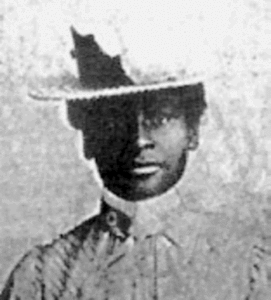
Mary Elizabeth Bowser, likely born Mary Jane Richards, was a slave of the Van Lew family in Richmond, Virginia. When John Van Lew died in September 1843, his will stipulated that his wife, Eliza, could not sell or free any of the family’s slaves. Eliza and her daughter Elizabeth Van Lew were against slavery and seem to have secretly granted their slaves, including Bowser, freedom.
When the Civil War broke out, the Van Lews brought food, medicine and books to Union soldiers at nearby Libby Prison. Elizabeth conveyed messages between the prisoners and Union officials and helped prisoners escape. To do this, she relied on an informal network of women and men, white and black, all drawn from Richmond’s clandestine Unionist community to help her. The most noteworthy of these individuals was Bowser, who had married a free black man named Wilson Bowser in 1861 and taken his name.
In the fall of 1865, Bowser gave an address in Brooklyn alluding to her infiltration of the Confederate White House during the war. Though the story has been difficult to document, Bowser’s willingness to risk her life as part of the Richmond underground is certain.
Details of Bowser’s life after the war are unknown.
NANCY HART DOUGLAS
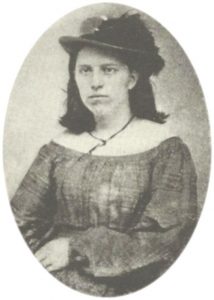
Nancy Hart Douglas (1846–c. 1902 [1913]) was a scout, guide, and spy for the Confederacy during the American Civil War. Serving first with the Moccasin Rangers, a pro-Confederate guerrilla group in present-day West Virginia, she later joined the Confederate Army and continued to serve as a guide and spy under General Stonewall Jackson.
Born Nancy Hart in 1846 in Raleigh, North Carolina, she and her family moved to Tazewell, Virginia, when she was an infant. Her mother was first cousin to Andrew Johnson, who became president after the assassination of President Abraham Lincoln. Hart lived with her family in West Virginia until the outbreak of the Civil War, at which time she developed great sympathy for the Southern cause. During the early years of her life on her family’s farm, she became an expert with rifles, pistols, and riding horses. She could reportedly operate a gun or handle a horse as well as a man. She eventually moved in with her sister and brother-in-law, Mary and William Clay Price. William Clay Price was not a soldier, but did things for the Confederate army in the evenings. One day the Union soldiers came to question him. They took him away and killed him down the road from his family. This fueled Nancy’s rage and hatred toward the Union cause.
For nearly two years Hart worked for the Moccasin Rangers as a spy and a scout, posing as a farm girl to gather intelligence. She saved the lives of a number of wounded Confederate soldiers by hiding them with sympathizers. She also personally led several cavalry raids against federal outposts. After one such skirmish she was briefly captured, but she persuaded the Union soldiers to let her go based on the fact she was a woman. In early 1861, after a contingent of Union troops passed through her town, Hart’s sympathy for the Confederacy prompted her to leave home and join the Moccasin Rangers, led by the infamous Perry Conley. Conley died in the summer of 1862, and with his loss the Moccasin Rangers disbanded, although Hart continued to spy on Union movements. She became a valuable asset to the Rangers, serving both as a spy and a guide to the local region. Hart became so famous and such an enigma for Union forces in West Virginia that a reward was offered for information leading to her capture in 1862. Shortly thereafter, she and a female friend were captured by Union troops led by Lt. Col. Starr and taken prisoner in Summersville, West Virginia. Here, she was photographed unsmiling and unemotional, by an itinerant photographer. According to legend, Hart did not smile because of the attire she had to wear for the picture. Civil War telegrapher Marion H. Kerner, an officer who befriended Hart at the encampment, later made her story famous in the magazine, Leslie’s Weekly. That same night, Hart escaped from the Union camp on Starr’s horse and joined a regiment of about 200 Confederate soldiers led by Major R. Augustus Bailey (the Moccasin Rangers had been disbanded since the death of Perry Conley). A week later, the Confederate troops overran Summersville, burning many of the public buildings and taking Lt. Col. Starr prisoner. Marion Kerner was also captured, but due to the kind treatment he had given Hart during her own imprisonment, she convinced the Confederate officers to release him. However, he was promptly recaptured after attempting to relay a telegram to Union forces. He was released at the war’s end. Francis Miller’s 1911 “Photographic History of the Civil War” repeats the claim Hart was captured by Lt. Col. Starr of the 9th West Virginia; a photograph was taken of Hart; she killed a guard with his own gun and a week later led a Confederate unit which captured Starr and the 9th West Virginia July 25, 1862.
Official Records of the Civil War mention the capture of Companies “A” and “F” of the 9th West Virginia Infantry at Summersville, West Virginia, July 25, 1862—but have no mention of an arrest/escape of a Nancy Hart in 1862. Likewise the Official W.V. Adjutant General Report on the 9th W.V. do not show any casualties for July 18–25, 1862.
After the war, Hart married the former Ranger Joshua Douglas, and they lived in Spring Creek near Cordova in Greenbrier County during the remainder of their lives. They had two sons, George and Kennos. Nancy later lived with her son on Manning Knob seven miles south of Richwood where her grave now lies. Records of Nancy’s death are conflicted. Though her tombstone says she died in 1902, there are no official records of her death in Greenbrier County, where she lived, or in state records. Her husband’s death record in the Greenbrier County Courthouse lists him as “Married” at the time of his death in 1907. Eyewitnesses put her alive and well in Richwood in 1911 when Halley’s comet was visible. “This means there will be another war,” she is alleged to have said. Her two granddaughters, Moppie McCollum and Myrtle Hollandsworth, were interviewed in 1992 and both recalled attending Nancy’s funeral around 1913.
The marker on Nancy’s grave was erected by a 4th-grade class at Beaver Elementary School in Craigsville, WV, in 1987 as a class project. The students got the date of Nancy’s death from Boyd Stutler’s account of her life in his 1963 book West Virginia in the Civil War. Her grave is located on Manning Knob in Greenbrier County, West Virginia, south of Richwood.